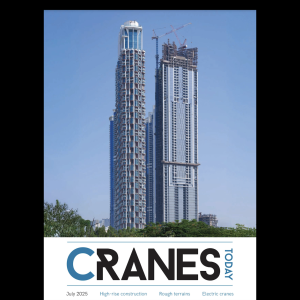Each of the three oversize, overweight loads, named the DCS, TCS and the hydrogenator after their functions in the manufacturing process, posed different planning and operational problems.
The DCS column was the smallest of the three and the first to be transported. At the fabrication yard in Vancouver, Washington, Emmert jacked up the 201ft (61m) long, 17ft high (5.2m) and 20ft wide load, weighing a total of 183t, on an eight-dolly transport system and hauled it across the Glen Jackson Bridge, and 500 miles beyond. A low bridge forced the convoy on to country roads. But along the way were two small bridges that could not take the convoy’s loads. Emmert used its 55ft barge ramps to jump over the bridge spans. Emmert had to jump the bridges at night, and take them up before school hours the next day, so timing was critical. After the convoy made it over the bridge, it had to manage a 9% grade and then an immediate 90-degree turn.
Although the TCS column was slightly smaller than the DCS column, it had to be sent over water part of the way. Once fabrication was completed, Emmert jacked up the vessel and set it on four underslung walking beams riding on eight dollies. The 197ft long, 18ft high, 18ft wide and 173t load was shipped up the Columbia river to Pasco, Washington. After being rolled over Emmert’s barge ramps and off the barge, the convoy was set up with push and pull trucks in back and front, with pilot cars at front and rear. The convoy again jumped two country bridges at night, the hill and the turns to make it to the final destination.
The hydrogenator was manufactured overseas and arrived in a heavy-lift ship at the port of Longview, Washington just as winter began to set in. The 208ft long, 19ft high, 21ft wide and 223t transport system went by barge and by road along the same route. During transit on the highway the convoy had to stop when winter weather grew too severe.






